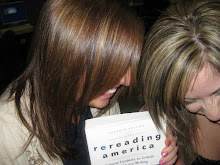Just a few fun things to check over before completing a paper.
#1: Plan your writing
Before you actually start to write, put some thought into what you’re going to write. First, determine your purpose and your primary audience. Decide what information you need to give your audience — and what information you don’t. Figure out the best way to convey your message. Focus on being objective and convincing so that your message appeals to both the receptive and resistant members of your audience.
#2: Do your homework
Research your topic so that you aren’t just relying on opinion. Collect and analyze data. Incorporate visual aids (charts, graphs, tables, photos, etc.) when appropriate.
#3: Write drafts
Don’t expect perfection in the beginning. In fact, your final product will be much better if you start by cranking out a crappy first draft. As writer Anne Lamott observed, “All good writers write them. This is how they end up with good second drafts and terrific third drafts.” Concentrate on the content of the writing, and be sure — above all — that it is accurate.
#4: Revise for style, correct grammar, and spelling
Writers who fail at this step lose credibility with their readers. Buy a good grammar handbook and dictionary and use them whenever you’re unsure about punctuation and spelling
#5: Choose effective wording
Use language that is concise and familiar rather than verbose and academic.
Examples:
Use, not utilize; shortage, not paucity. Avoid clichés, slang, and buzzwords.
#6: Watch out for commonly confused words and phrases
Many words are easily mixed up, such as:
- accept/except
- advice/advise
- affect/effect
- its/it’s
- lay/lie
- passed/past
- personal/personnel
- moral/morale
- sit/set
- real/really
- your/you’re
- their/they’re
- theirs/there’s
Learn to use these words correctly and double-check to make sure the wrong form doesn’t get by you.
#7: Be precise
Use specific, concrete words.
Examples:
Three, not several; boat or car, not vehicle. Watch out for words such as recently, substantial, a few, and a lot. Try to be more exact. Give your reader a specific mental picture of what you mean.
#8: Write concisely
Businesspeople are too busy for wordy writing. Keep your reports, memos, and other business documents as brief and clear as possible.
#9: Avoid redundancy
Many repetitive phrases can be tightened into one word.
Examples:
History, not past history; plan, not plan ahead; sum or total, not sum total, to, not in order to.
#10: Vary your sentence structure
Mix up simple, compound, and complex sentences. Use both short and long sentences to keep your writing interesting.
etc.. http://blogs.techrepublic.com.com/10things/?p=110

Aly, very nice. I read through the list and was reminded of a few things I should be doing with my writing. The list you found is simple and straightforward; I'm a big fan of that. Good work. Michael
ReplyDelete